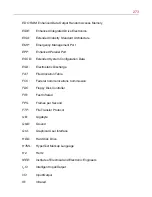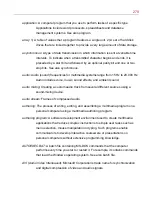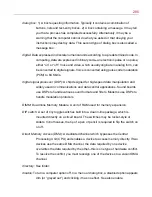
277
address: 1) A number that identifies the location of information, such as the name of a file
or a value for processing, in a computer system or network. A device may use
a specific memory address to transfer information to and from the computer.
See also hexadecimal. 2) A series of characters that identifies the location of a
user’s electronic mailbox.
Advanced Power Management: An industry standard for monitoring and conserving
power consumption, particularly on battery-operated portable computers.
Advanced SCSI Programming Interface (ASPI). A standard governing how devices on
multiple SCSI channels interact with each other and with the rest of the
system.
allocate: To assign space or resources for a specific task. This is often used to refer to
memory or disk space.
alphanumeric: Consisting of numbers, symbols and letters you can type or print.
alternating current (AC): Electric current that reverses its direction at regular intervals.
This type of power is usually supplied to residential and commercial wall
outlets.
American National Standards Institute (ANSI) character set: The set of characters
available in Microsoft Windows (or other operating systems). The character set
includes letters, numbers, symbols and foreign language characters.
American Standard Code for Information Interchange (ASCII): A set of binary codes that
represent the most commonly used letters, numbers and symbols. The
standard ASCII set consists of 128 codes (for 7-bit characters). Most PCs use
an extended set of 256 codes (for 8-bit characters). See also binary.
analog: A continuous electrical signal that can vary in frequency and amplitude. In video,
frequency corresponds to resolution and amplitude to brightness. In sound,
frequency is a measure of pitch and amplitude and represents volume. Analog
data must be converted to digital data for input to computers.
animation: A technique of imparting motion to items, either drawings or inert objects.
Summary of Contents for 3200
Page 1: ... ...
Page 309: ...309 ...
















































